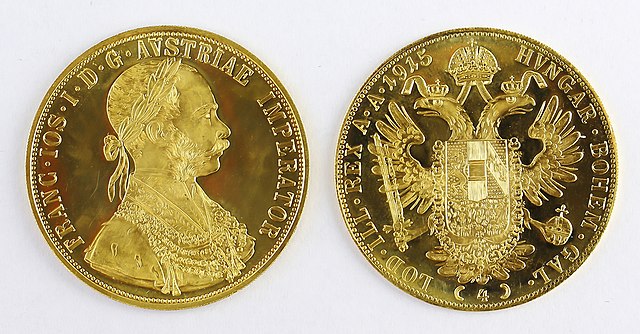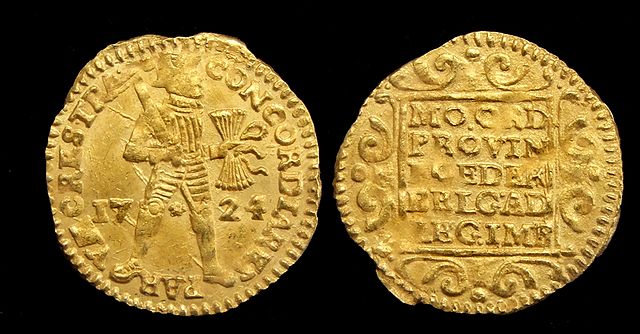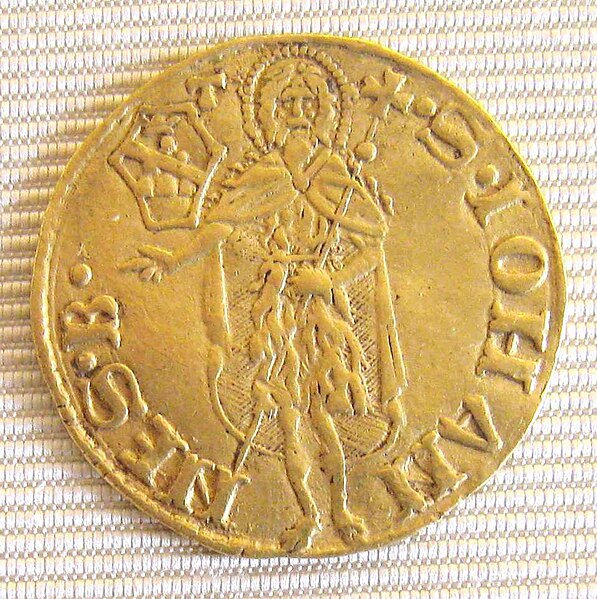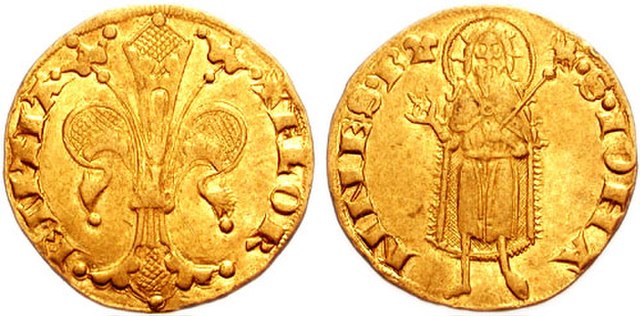The ducat coin was used as a trade coin in Europe from the later Middle Ages to the 19th century. Its most familiar version, the gold ducat or sequin containing around 3.5 grams of 98.6% fine gold, originated in Venice in 1284 and gained wide international acceptance over the centuries. Similarly named silver ducatons also existed. The gold ducat circulated along with the Florentine florin and preceded both the modern British pound sterling and the United States dollar.
Austrian gold ducat depicting Kaiser Franz-Josef, c. 1910
Ferdinand III depicted on a 100 Hungarian Ducat (1629)
Austrian four ducats, c. 1915 (official restrike)
Netherlands, 1724 Gold ducat, Utrecht
The Florentine florin was a gold coin struck from 1252 to 1533 with no significant change in its design or metal content standard during that time. It had 54 grains of nominally pure or 'fine' gold with a purchasing power difficult to estimate but ranging according to social grouping and perspective from approximately 140 to 1,000 modern US dollars. The name of the coin comes from the Giglio bottonato, the floral emblem of the city, which is represented at the head of the coin.
The back of an Italian florin coin
Florin from the Środa treasure
Gold florin or "Beiersgulden", struck in Holland under John of Bavaria
Gold florin or "Philippus goudgulden", struck in Dordrecht under Philip the Fair








